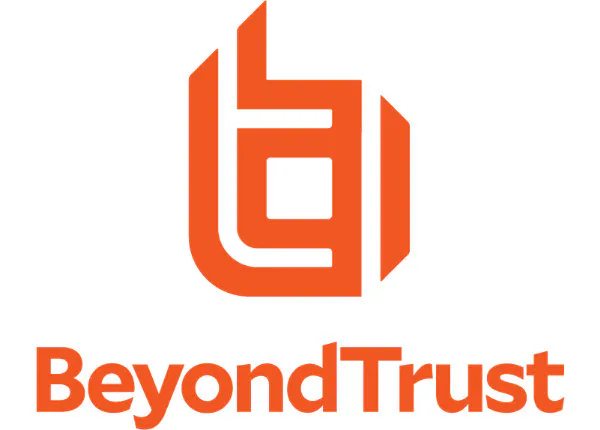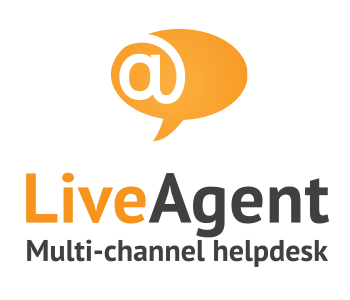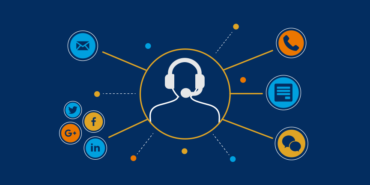In the dynamic business environment of 2024, customer service experience is a critical differentiator that can significantly impact an organization's success.
Home » Help Desk Software
Help Desk Software
Attention, business owners! Are you tired of fielding endless customer inquiries through scattered emails and chats? It's time to streamline your support with powerful help desk software. Implementing a centralized help desk solution can revolutionize your customer service. Imagine having all inquiries, tickets, and conversations in one organized dashboard. No more hunting through cluttered inboxes - just efficient, transparent issue-tracking and speedy resolutions. The right help desk software empowers your team to provide top-notch support. With features like automated workflows, knowledge base integration, and robust reporting, you'll deliver a seamless experience that keeps customers coming back. Don't let disorganized support hold your business back. Invest in a help desk solution today and watch your customer satisfaction soar. Your clients (and your team) will thank you.
List of the Best Help Desk Software

Zendesk Suite
Zendesk's customer service solution to build the best customer experience
Zendesk provides a modern HR and IT help desk experience that saves time through convenient automations and optimized workflows. Zendesk help desk ticketing software simplifies internal and external support, with 60% of customers seeing CSAT increase and 85% gaining better visibility after implementing Zendesk. Power up your support with software that alleviates common pain points by deflecting more tickets and speeding up resolution times. Choose the smart, scalable support solution.
- Call Center Management
- Alerts/Escalation
- Email Management
- Reporting/Analytics
- Real-Time Notifications
- Support Ticket Management
- Ticket Management
- Access Controls/Permissions
- Remote Access/Control
EngageBay is a simple, powerful, all-in-one marketing, sales and service automation software with free CRM for startups and growing businesses. EngageBay helps you automate your marketing, sales and support by combining lead generation, email marketing, marketing automation, CRM & social media engagement, helpdesk, and ticketing.
- Call Center Management
- Alerts/Escalation
- Email Management
- Reporting/Analytics
- Real-Time Notifications
- Support Ticket Management
- Ticket Management
- Access Controls/Permissions
- Remote Access/Control
Intercom is the only complete AI-first customer service platform, enhancing the customer experience, improving operational efficiency, and scaling with your business every step of the way. Our AI-first platform is built on a single AI system, with three major components that will allow you to deliver the remarkable customer service you’ve spent decades striving for: AI Agent: Customers no longer wait or get deflected. AI Chatbot provides instant accurate, responses, 24/7 to most questions.
- Call Center Management
- Alerts/Escalation
- Email Management
- Reporting/Analytics
- Real-Time Notifications
- Support Ticket Management
- Ticket Management
- Access Controls/Permissions
- Remote Access/Control

BeyondTrust Remote Support
Supercharge your service desk with secure access
BeyondTrust Remote Support (formerly Bomgar Remote Support) enables secure, instant remote support to customers using Windows, Mac, Android, iOS, or other devices, whether or not they are on the corporate network. Users can fix end systems or troubleshoot issues using screen sharing, remote control, unattended access, file sharing, annotations, and mobile device camera sharing. Real-time chat, canned scripts, collaboration and escalation tools improve technician efficiency.
- Call Center Management
- Alerts/Escalation
- Email Management
- Reporting/Analytics
- Real-Time Notifications
- Support Ticket Management
- Ticket Management
- Access Controls/Permissions
- Remote Access/Control
LiveAgent, ranked among the best Help Desk software with a 4.7 score from 1550+ reviews, offers a comprehensive array of features for excellent customer support. Join renowned companies like BMW, Yamaha, and Huawei in delivering first-class support to over 150 million end-users worldwide. Start your journey with a 1-month free trial – no credit card required.
- Call Center Management
- Alerts/Escalation
- Email Management
- Reporting/Analytics
- Real-Time Notifications
- Support Ticket Management
- Ticket Management
- Access Controls/Permissions
- Remote Access/Control
Latest Trends Related to Help Desk Software
The Future of Help Desk Software: Trends to Watch in 2024
As businesses increasingly prioritize customer experience, help desk software continues to evolve to meet the demands of modern consumers and support teams. In
Importance of help desk software
Help desk software plays a crucial role in modern business operations by streamlining customer support and enhancing overall efficiency. Here are some key reas
Top Tips for Building a Flourishing Help Center
A flourishing help center is a vital component of a successful customer support strategy. It not only enhances user satisfaction but also reduces the workload
Help Desk Software Guide
Essential help desk software buying information
When selecting help desk software, it's crucial to consider several factors to ensure you choose a solution that meets your organization’s needs. Here is an essential guide to help desk software buying information:
1. Identify Your Needs and Objectives
Evaluate Your Requirements:
- Size of Your Organization: Consider the number of support agents and the volume of tickets you handle.
- Type of Support: Determine whether you need support for IT, customer service, or both.
- Channels of Communication: Identify the communication channels you need, such as email, chat, phone, social media, or self-service portals.
Define Objectives:
- Improve Response Times: Aim to enhance the speed of response and resolution.
- Increase Efficiency: Look for automation features that streamline workflows and reduce manual tasks.
- Enhance Customer Satisfaction: Choose software that helps improve user experience and satisfaction.
2. Key Features to Look For
Ticket Management:
- Automated Ticketing: Automate the creation, assignment, and tracking of support tickets.
- Prioritization and Categorization: Use features that allow prioritizing and categorizing tickets based on urgency and type.
- SLA Management: Ensure the software supports Service Level Agreement (SLA) management to track and meet response and resolution times.
Multi-Channel Support:
- Email Integration: Seamlessly integrate with email systems to convert emails into tickets.
- Live Chat and Messaging: Include chat features to offer real-time support.
- Social Media Integration: Manage support requests from social media platforms.
Self-Service:
- Knowledge Base: Provide a knowledge base or FAQ section to help users find answers independently.
- Community Forums: Facilitate user interaction and community support through forums.
Automation and AI:
- Automated Workflows: Use automation to route tickets, send notifications, and trigger actions based on predefined rules.
- AI and Chatbots: Implement AI-powered chatbots to handle common queries and provide 24/7 support.
Reporting and Analytics:
- Performance Metrics: Track key performance indicators (KPIs) like ticket volume, response times, resolution rates, and customer satisfaction.
- Custom Reports: Generate custom reports to analyze support operations and identify improvement areas.
Customization and Scalability:
- Customizable Interface: Tailor the software to match your brand and workflow needs.
- Scalable Solutions: Ensure the software can scale with your business as you grow.
Integration Capabilities:
- CRM Integration: Integrate with Customer Relationship Management (CRM) systems for a unified view of customer interactions.
- Third-Party Applications: Ensure compatibility with other tools and applications you use, such as project management, e-commerce, or collaboration tools.
3. User Experience and Accessibility
Ease of Use:
- Intuitive Interface: Choose software with a user-friendly and intuitive interface to minimize the learning curve for your team.
- Mobile Access: Ensure the software is accessible on mobile devices for support agents on the go.
Accessibility:
- Accessibility Standards: Ensure the software complies with accessibility standards to accommodate users with disabilities.
4. Security and Compliance
Data Security:
- Encryption: Ensure data is encrypted both at rest and in transit.
- Access Controls: Implement role-based access controls to restrict access to sensitive information.
- Audit Logs: Maintain audit logs to track changes and access to data.
Compliance:
- Regulatory Compliance: Ensure the software complies with relevant regulations, such as GDPR, HIPAA, or CCPA, depending on your industry and location.
5. Vendor Support and Reputation
Vendor Support:
- Customer Support: Evaluate the level of support provided by the vendor, including availability, response times, and support channels.
- Training and Onboarding: Check if the vendor offers training resources, onboarding assistance, and documentation.
Reputation:
- Customer Reviews: Read reviews and testimonials from other users to gauge the software’s performance and reliability.
- Case Studies: Look for case studies or success stories from similar organizations.
6. Cost and Budget Considerations
Pricing Models:
- Subscription Plans: Compare subscription plans, including monthly or annual billing options.
- Per User Pricing: Consider the cost per user and any additional fees for features or integrations.
Total Cost of Ownership:
- Hidden Costs: Be aware of potential hidden costs, such as setup fees, customization charges, or additional support fees.
- ROI Calculation: Calculate the return on investment (ROI) by considering how the software will improve efficiency and reduce support costs.
7. Trial and Evaluation
Free Trials and Demos:
- Test the Software: Take advantage of free trials and demos to test the software’s features, usability, and performance.
- Feedback from Team: Involve your support team in the evaluation process to gather their feedback and insights.
Pilot Programs:
- Implement a Pilot: Run a pilot program with a small group of users to evaluate the software in a real-world environment.
- Measure Success: Measure the success of the pilot program based on predefined criteria, such as ease of use, ticket resolution times, and user satisfaction.
What is help desk software?
Help desk software is a tool designed to streamline the process of providing customer support and managing service requests. It enables organizations to efficiently track, prioritize, and resolve issues reported by customers or internal users. Here’s a detailed explanation of help desk software and its key components:
Key Features of Help Desk Software
Ticket Management:
- Ticket Creation: Automatically or manually create tickets for each support request.
- Categorization and Prioritization: Categorize tickets based on the type of issue and prioritize them based on urgency.
- Assignment and Routing: Automatically assign tickets to the appropriate support agents or teams based on predefined rules.
Multi-Channel Support:
- Email Integration: Convert support emails into tickets and manage them within the system.
- Live Chat: Provide real-time support through chat.
- Phone Support: Integrate with phone systems to log and manage phone-based support requests.
- Social Media: Manage support interactions on social media platforms.
Self-Service Options:
- Knowledge Base: Create and maintain a repository of articles, FAQs, and guides to help users find answers independently.
- Community Forums: Facilitate user discussions and peer-to-peer support.
Automation:
- Automated Workflows: Automate repetitive tasks, such as ticket assignment, follow-up emails, and status updates.
- SLA Management: Ensure tickets are resolved within the agreed Service Level Agreements by automating reminders and escalations.
Reporting and Analytics:
- Performance Metrics: Track metrics like ticket volume, response times, resolution rates, and customer satisfaction.
- Custom Reports: Generate custom reports to analyze support operations and identify areas for improvement.
Integration Capabilities:
- CRM Integration: Sync with Customer Relationship Management (CRM) systems for a unified view of customer interactions.
- Third-Party Applications: Integrate with other tools like project management, collaboration, and e-commerce platforms.
User Management and Security:
- Role-Based Access: Control access to different features and data based on user roles.
- Data Security: Ensure data security through encryption, access controls, and regular audits.
Benefits of Help Desk Software
Improved Efficiency:
- Streamlined Processes: Automate routine tasks and standardize processes to improve efficiency.
- Centralized Management: Manage all support requests from a single platform, reducing the complexity of handling multiple channels.
Enhanced Customer Satisfaction:
- Faster Response Times: Prioritize and route tickets efficiently to ensure quicker resolution.
- Consistent Support: Provide consistent and reliable support through standardized responses and processes.
Better Resource Management:
- Workload Distribution: Balance the workload among support agents to prevent burnout and ensure timely resolution.
- Performance Monitoring: Track agent performance and identify areas for improvement.
Insightful Analytics:
- Data-Driven Decisions: Use analytics to gain insights into support operations and make informed decisions.
- Identify Trends: Recognize common issues and trends to proactively address them and improve products or services.
Scalability:
- Adaptable Solutions: Scale the software as your business grows, adding more agents, channels, or features as needed.
- Customization: Customize the software to fit your specific needs and workflows.
Use Cases for Help Desk Software
Customer Support:
- Handle customer inquiries, complaints, and issues across various channels.
- Provide timely and consistent support to enhance customer satisfaction and loyalty.
IT Support:
- Manage internal IT service requests, incidents, and problems.
- Ensure IT issues are resolved efficiently to minimize downtime and disruption.
HR Support:
- Address employee inquiries and requests related to HR policies, benefits, and payroll.
- Streamline the process of managing employee support.
Facilities Management:
- Manage maintenance requests and issues related to office facilities and infrastructure.
- Ensure a smooth and well-maintained working environment.
Help desk software pricing
Help desk software pricing can vary widely based on factors such as the features offered, the number of users, the type of support provided, and the deployment method (cloud-based vs. on-premises). Below is a breakdown of typical pricing models and what you can expect in terms of costs:
Common Pricing Models
Per User, Per Month
- This is the most common pricing model for cloud-based help desk software.
- You pay a monthly fee for each user (support agent) who uses the software.
- Plans may vary based on the features included at each pricing tier.
Tiered Pricing
- Providers offer different pricing tiers with varying levels of features and capabilities.
- Basic plans may include essential features, while premium plans offer advanced functionalities such as automation, integrations, and analytics.
Flat Rate
- Some providers offer a flat monthly or annual fee regardless of the number of users.
- This can be beneficial for larger teams or organizations with many support agents.
Pay-as-You-Go
- This model charges based on usage, such as the number of tickets handled or interactions.
- It can be suitable for smaller businesses or those with fluctuating support needs.
Enterprise Pricing
- Customized pricing plans tailored to large organizations with specific requirements.
- These plans often include advanced features, dedicated support, and higher levels of customization.
Typical Pricing Ranges
Basic Plans
- Price Range: $5 - $20 per user, per month
- Features: Basic ticketing system, email support, simple automation, and basic reporting.
- Ideal For: Small businesses, startups, or teams with minimal support needs.
Standard Plans
- Price Range: $20 - $50 per user, per month
- Features: Multi-channel support (email, chat, social media), advanced automation, SLA management, integrations with other tools, and more detailed reporting.
- Ideal For: Medium-sized businesses or those with more complex support requirements.
Premium Plans
- Price Range: $50 - $100+ per user, per month
- Features: Full automation, AI-powered chatbots, advanced analytics, custom reporting, multiple integrations, and dedicated account management.
- Ideal For: Large organizations or those with high-volume support needs.
Enterprise Plans
- Price Range: Custom pricing (often $100+ per user, per month)
- Features: Highly customizable solutions, on-premises deployment options, enterprise-level security, dedicated support teams, and extensive integration capabilities.
- Ideal For: Large enterprises with specific needs and high customization requirements.
Examples of Help Desk Software Pricing
Freshdesk
- Sprout (Free): Basic ticketing, email and social support, knowledge base.
- Blossom ($15/user/month): Includes automation, collision detection, and basic reporting.
- Garden ($35/user/month): Adds time tracking, performance reports, and satisfaction surveys.
- Estate ($49/user/month): Advanced features like custom roles, portal customization, and chatbots.
- Forest ($99/user/month): Enterprise features including IP whitelisting, HIPAA compliance, and more.
Zendesk
- Essential ($5/user/month): Email and social ticketing, basic reporting.
- Team ($19/user/month): All Essential features plus dashboards and public apps.
- Professional ($49/user/month): Customizable business rules, time tracking, and advanced reporting.
- Enterprise ($99/user/month): Advanced analytics, multi-brand support, AI-powered features.
- Elite ($199/user/month): Premium features, including 99.9% uptime SLA, advanced security features.
Jira Service Management
- Free: Up to 3 agents, includes basic features.
- Standard ($20/user/month): Incident management, SLAs, automation, and more.
- Premium ($45/user/month): Advanced incident management, unlimited automation, and capacity planning.
- Enterprise: Custom pricing for large organizations with advanced needs.
Additional Costs to Consider
- Setup Fees: Some vendors may charge a one-time setup fee.
- Customization: Costs for custom features, integrations, or branding.
- Training: Fees for training sessions or materials for your support team.
- Support: Charges for premium support or dedicated account management.
- Add-ons: Costs for additional features or services not included in the base plans.
Help desk software features rated by users
1. Ticket Management
- Automated Ticketing: Users highly rate the ability to automatically create and assign tickets based on incoming support requests, which streamlines the workflow and reduces manual intervention.
- Prioritization and Categorization: Effective ticket prioritization and categorization features are praised for helping support teams manage workloads efficiently and ensure critical issues are addressed promptly.
2. Multi-Channel Support
- Email Integration: Seamless integration with email is crucial, allowing users to convert emails into tickets automatically and manage them within a unified system.
- Live Chat: Real-time chat support is valued for its ability to provide immediate assistance to customers, improving response times and customer satisfaction.
- Social Media Support: Integration with social media platforms is appreciated for enabling support teams to handle inquiries and issues from social channels effectively.
3. Self-Service Options
- Knowledge Base: A comprehensive and searchable knowledge base is one of the most highly rated features, empowering users to find answers independently and reducing the volume of support tickets.
- Community Forums: Users value the ability to create community forums where customers can help each other and share knowledge.
4. Automation and AI
- Automated Workflows: Automation features, such as auto-responses, ticket routing, and follow-up reminders, are highly rated for saving time and ensuring consistent processes.
- AI and Chatbots: AI-powered chatbots are praised for handling common queries, providing 24/7 support, and freeing up human agents for more complex issues.
5. Reporting and Analytics
- Performance Metrics: Detailed reporting and analytics capabilities are essential for tracking key performance indicators (KPIs) like ticket volume, response times, and resolution rates.
- Custom Reports: The ability to generate custom reports is valued for providing insights tailored to specific business needs and helping identify areas for improvement.
6. User Experience and Accessibility
- Intuitive Interface: An easy-to-use and intuitive interface is consistently rated highly, as it minimizes the learning curve and boosts productivity.
- Mobile Access: Accessibility on mobile devices is important for users who need to manage support requests on the go.
7. Integration Capabilities
- CRM Integration: Integration with CRM systems is highly rated for providing a unified view of customer interactions and improving overall customer relationship management.
- Third-Party Integrations: Users appreciate seamless integration with other tools such as project management software, collaboration platforms, and e-commerce systems.
8. Customization and Scalability
- Customizable Interface: Customization options are highly valued, allowing organizations to tailor the help desk software to their specific workflows and branding.
- Scalability: The ability to scale the software as the business grows is crucial, with users favoring solutions that can accommodate an increasing number of users and support requests.
9. Security and Compliance
- Data Security: Features like encryption, role-based access control, and audit logs are essential for protecting sensitive information and are highly rated by users.
- Regulatory Compliance: Compliance with standards such as GDPR, HIPAA, and CCPA is critical for users in regulated industries, ensuring that the software meets necessary legal requirements.
10. Vendor Support and Training
- Customer Support: High-quality customer support from the software vendor, including availability, responsiveness, and support channels, is highly rated.
- Training and Resources: Users appreciate comprehensive training resources, including documentation, webinars, and onboarding assistance.
User-Rated Help Desk Software Examples
Freshdesk
- Pros: Highly rated for its intuitive interface, robust ticketing system, and comprehensive knowledge base.
- Cons: Some users mention limitations in customization and advanced reporting features.
Zendesk
- Pros: Praised for its powerful multi-channel support, extensive integration capabilities, and advanced automation features.
- Cons: Users often cite higher costs and a steeper learning curve for new users.
Jira Service Management
- Pros: Rated highly for its integration with other Atlassian products, customizable workflows, and strong reporting and analytics capabilities.
- Cons: Some users find it complex to set up and manage without technical expertise.
Zoho Desk
- Pros: Valued for its affordability, ease of use, and strong automation features.
- Cons: Users mention that the user interface could be more modern and that some advanced features are limited.
HubSpot Service Hub
- Pros: Users appreciate its seamless integration with HubSpot’s CRM, user-friendly interface, and comprehensive customer support features.
- Cons: Some users find the pricing to be higher compared to other options.
Top benefits of help desk software identified by users
1. Improved Efficiency and Productivity
- Streamlined Ticket Management: Automated ticket creation, routing, and prioritization help support teams manage inquiries more efficiently, reducing the time spent on manual tasks.
- Centralized System: A unified platform for managing all support requests from various channels (email, chat, phone, social media) ensures that nothing falls through the cracks and improves overall productivity.
2. Enhanced Customer Satisfaction
- Faster Response Times: Automated workflows and prioritization ensure that tickets are addressed quickly, leading to faster resolutions and higher customer satisfaction.
- Consistent Support: Standardized responses and knowledge base articles ensure that customers receive consistent and accurate information.
3. Better Resource Management
- Workload Balancing: Features like automated ticket assignment and workload distribution help prevent agent burnout and ensure a balanced workload.
- Performance Monitoring: Analytics and reporting tools allow managers to monitor agent performance and identify areas for improvement, ensuring optimal resource utilization.
4. Comprehensive Reporting and Analytics
- Performance Metrics: Detailed reports on key performance indicators (KPIs) such as ticket volume, response times, resolution rates, and customer satisfaction scores provide insights into support operations.
- Customizable Reports: The ability to generate custom reports allows organizations to tailor insights to their specific needs and make data-driven decisions.
5. Improved Collaboration
- Internal Communication Tools: Built-in chat and collaboration tools enable support agents to communicate efficiently, share knowledge, and resolve complex issues more effectively.
- Shared Knowledge Base: A centralized knowledge base allows agents to access and contribute information, fostering a collaborative environment and enhancing support quality.
6. Increased Self-Service Capabilities
- Knowledge Base and FAQs: Providing customers with a comprehensive knowledge base and FAQs empowers them to find answers independently, reducing the volume of support tickets.
- Community Forums: Enabling user-to-user interactions through forums allows customers to help each other, further reducing the load on support agents.
7. Scalability and Flexibility
- Scalable Solutions: Help desk software can scale with the business, accommodating an increasing number of users, tickets, and channels as the organization grows.
- Customizable Workflows: The ability to customize workflows, fields, and templates allows organizations to tailor the software to their specific processes and requirements.
8. Enhanced Security and Compliance
- Data Protection: Features like encryption, role-based access control, and audit logs ensure that sensitive information is protected.
- Regulatory Compliance: Compliance with industry standards and regulations (e.g., GDPR, HIPAA) ensures that the software meets legal requirements, providing peace of mind to users.
9. Integration with Other Tools
- CRM Integration: Seamless integration with CRM systems provides a unified view of customer interactions, improving the overall customer relationship management process.
- Third-Party Integrations: Compatibility with other tools such as project management, collaboration platforms, and e-commerce systems enhances the functionality and versatility of the help desk software.
10. Cost Savings
- Reduced Operational Costs: Automation and self-service capabilities reduce the need for extensive manual intervention, lowering operational costs.
- Improved Efficiency: Streamlined processes and better resource management lead to cost savings through increased efficiency and productivity.
What is help desk software used for?
1. Ticket Management
- Creation and Tracking: Help desk software allows for the creation, assignment, and tracking of support tickets from start to resolution.
- Prioritization: It helps prioritize tickets based on urgency and importance, ensuring that critical issues are addressed promptly.
- Categorization: Tickets can be categorized by type, department, or other criteria to streamline handling and resolution.
2. Multi-Channel Support
- Email Integration: Convert support emails into tickets and manage them within the system.
- Live Chat: Provide real-time support through integrated chat features.
- Phone Support: Log and manage phone-based support requests.
- Social Media: Handle support requests coming from social media platforms.
3. Knowledge Base and Self-Service
- Knowledge Base: Create and maintain a repository of articles, FAQs, and guides to help users find answers independently.
- Self-Service Portal: Allow customers or employees to access the knowledge base and submit tickets through a self-service portal.
- Community Forums: Facilitate user discussions and peer-to-peer support.
4. Automation and Workflow Management
- Automated Ticket Routing: Automatically assign tickets to the appropriate support agents or teams based on predefined rules.
- Automated Responses: Send automated replies to acknowledge receipt of tickets and provide status updates.
- SLA Management: Track and enforce Service Level Agreements (SLAs) to ensure timely resolution of tickets.
5. Reporting and Analytics
- Performance Metrics: Monitor key performance indicators (KPIs) such as response times, resolution rates, and customer satisfaction.
- Custom Reports: Generate custom reports to analyze support operations and identify trends or areas for improvement.
- Dashboards: Visualize important metrics and trends through interactive dashboards.
6. Customer Relationship Management
- Customer History: Maintain a history of all interactions with each customer, providing context for support agents.
- Integration with CRM: Seamlessly integrate with Customer Relationship Management (CRM) systems for a unified view of customer interactions.
7. Internal Support and IT Service Management
- IT Support: Manage internal IT service requests, incidents, and problems efficiently.
- HR Support: Handle employee inquiries and requests related to HR policies, benefits, and payroll.
- Facilities Management: Manage maintenance requests and issues related to office facilities and infrastructure.
8. Collaboration Tools
- Internal Chat: Facilitate communication and collaboration among support agents.
- Ticket Sharing: Allow multiple agents or teams to collaborate on resolving complex issues.
- Notes and Attachments: Enable agents to add notes and attachments to tickets for better documentation and context.
9. User Management and Security
- Role-Based Access Control: Control access to different features and data based on user roles and permissions.
- Data Security: Ensure data security through encryption, access controls, and regular audits.
- Compliance: Ensure compliance with industry regulations and standards (e.g., GDPR, HIPAA).
10. Customer Feedback and Satisfaction
- Surveys: Send satisfaction surveys to customers after ticket resolution to gather feedback.
- Feedback Analysis: Analyze feedback to identify strengths and areas for improvement in the support process.
Who uses help desk software?
1. Customer Support Teams
- Customer Service Representatives: Handle inquiries, complaints, and support requests from customers.
- Technical Support Agents: Provide technical assistance and troubleshoot issues related to products or services.
- Customer Success Managers: Monitor customer satisfaction and ensure customers are getting the most out of the product or service.
2. IT Support and IT Service Management (ITSM) Teams
- IT Support Technicians: Manage internal IT issues, such as hardware and software problems, network issues, and other technical support needs.
- System Administrators: Oversee the IT infrastructure and ensure systems are running smoothly.
- IT Service Managers: Coordinate IT support activities and ensure compliance with Service Level Agreements (SLAs).
3. Human Resources (HR) Departments
- HR Support Staff: Handle employee inquiries related to HR policies, benefits, payroll, and other HR-related issues.
- HR Managers: Oversee HR support activities and ensure that employee issues are resolved efficiently.
4. Facilities Management Teams
- Facilities Managers: Manage maintenance requests and issues related to office facilities and infrastructure.
- Maintenance Staff: Respond to and resolve facilities-related support requests.
5. Educational Institutions
- IT Support for Students and Faculty: Provide technical support for students, faculty, and administrative staff.
- Student Services: Handle inquiries and support requests related to academic and administrative services.
6. Healthcare Organizations
- IT Support for Medical Staff: Manage IT issues in hospitals and clinics to ensure smooth operation of medical systems and devices.
- Patient Support: Handle patient inquiries and support requests related to appointments, medical records, and other services.
7. Financial Services
- Customer Support for Financial Products: Provide support for banking, investment, and insurance products.
- IT Support for Financial Systems: Manage IT issues related to financial software and systems.
8. Retail and E-commerce
- Customer Support for Shoppers: Handle inquiries and support requests related to orders, returns, and product information.
- IT Support for Retail Systems: Manage IT issues related to point-of-sale systems, e-commerce platforms, and other retail technologies.
9. Telecommunications
- Customer Support for Telecom Services: Provide support for phone, internet, and cable services.
- Technical Support for Network Issues: Manage technical issues related to network connectivity and service disruptions.
10. Government and Public Sector
- Citizen Support Services: Handle inquiries and support requests from the public related to government services.
- Internal IT Support: Provide IT support for government employees and departments.
11. Nonprofit Organizations
- Donor and Volunteer Support: Manage inquiries and support requests from donors, volunteers, and beneficiaries.
- IT Support for Staff: Provide IT support for nonprofit staff and ensure smooth operation of technology systems.
Why People Trust Firm's.Today
1. Transparency and Credibility
Frims.today emphasizes transparency in its operations, which builds trust with its users. It provides clear and detailed information about its services, processes, and the benefits it offers. Transparency in business practices is a key factor in gaining customer trust.
2. Expert Reviews and Recommendations
The platform is known for its expert reviews and recommendations. Users trust the insights provided by professionals who have in-depth knowledge and experience in their respective fields. This expertise ensures that the recommendations are reliable and valuable.
3. User Testimonials and Reviews
Frims.today features user testimonials and reviews that reflect the positive experiences of other customers. Seeing real feedback from other users helps build trust and reassures potential customers about the platform’s reliability and effectiveness.
4. Comprehensive and Up-to-Date Information
The platform offers comprehensive and up-to-date information on a wide range of topics. Regular updates and accurate information help users make informed decisions, contributing to their trust in the platform.
5. Strong Online Presence
Frims.today has a strong online presence and a good reputation across various platforms. Positive mentions and reviews on social media, forums, and other websites further enhance its credibility and trustworthiness.
6. Customer Support and Engagement
Effective customer support and engagement are crucial for building trust. Frims.today provides responsive and helpful customer support, addressing user queries and concerns promptly. Active engagement with users through various channels also fosters a sense of trust and reliability.
7. Security and Privacy
Ensuring user data security and privacy is a top priority for Frims.today. The platform implements robust security measures to protect user information, which is critical for gaining and maintaining user trust.
8. Positive Brand Image
A positive brand image, built through consistent quality service and ethical practices, helps in gaining user trust. Frims.today's reputation for reliability and quality contributes significantly to why people trust the platform.







